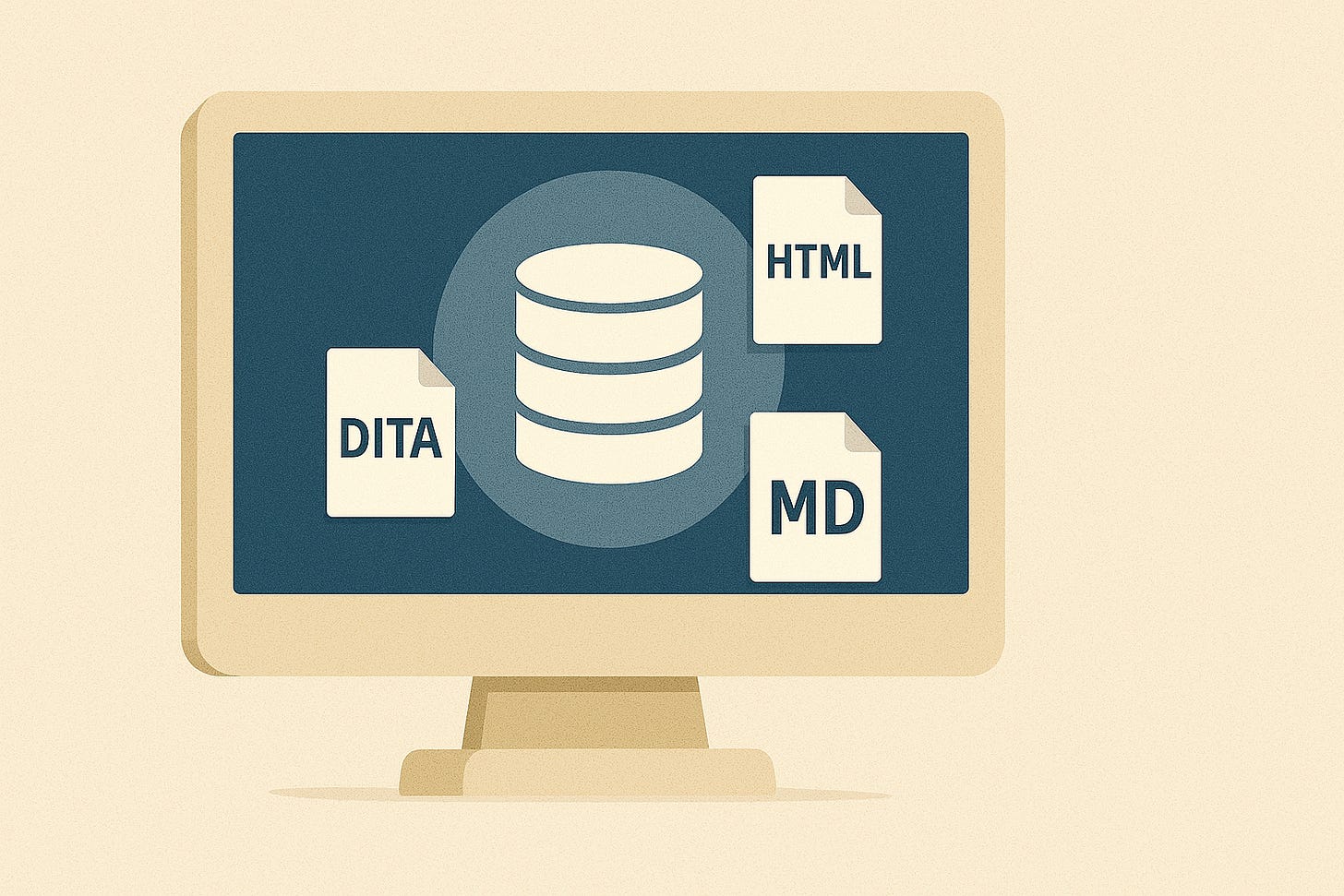A Universal Truth About Content (And The Graphs That Might Save It)
A summary of Michael Iantosca’s vision for a graph-based universal Component Content Management System
If you've ever worked in a content management system and thought, "Surely, there must be a better way," you're not alone. Michael Iantosca—technical documentation's equivalent of a weathered lighthouse keeper yelling at ships to avoid the rocks—thinks so, too.
In his blog post, "A Graph-Based Universal Component Content Management System," Iantosca proposes a better way to manage content: combine the strengths of component content systems with the intelligence of knowledge graphs.
It’s a practical fix for a very real problem. Here's the gist, minus the jargon and caffeine-fueled despair.
Related webinar: Graph-Driven RAG AI Powered by DITA
Old Software Systems, New Headaches
Most content management systems are fine if you treat content like Lego blocks—snap one to another and pretend that context doesn’t matter. Software developers built these systems to manage chunks of content (called components) but didn't design them to understand how those chunks relate to each other. They store content well—but they fail to understand how those chunks relate to each other.
Think of them like a warehouse that stores all your boxes but forgets where each one came from or how they fit together.
Worse still, the content gets flattened—like a soufflé in a marching band—losing the nuance, context, and relationships that make it useful. That lack of context and connection becomes problematic if you care about accuracy, personalization, and keeping your job.
That lack of context and connection becomes a problem if you care about accuracy, personalization, or delivering the right information to the right audience. These systems can store your content just fine. But they can’t reason with it, and they certainly can’t help AI do that either.
Knowledge Graphs (And Why You Should Care)
Iantosca introduces the idea of using knowledge graphs—a structure that captures not just content, but the rich web of relationships between content, metadata, audience needs, product versions, and more.
A knowledge graph doesn’t just store data. It understands the data. It maps relationships. It provides context. And that context makes it possible to deliver more accurate, personalized, and AI-ready content experiences.
Instead of asking writers to manually stitch together relevance, a graph-based system knows that if a topic is part of a larger process, and that process only applies to users in Canada on version 3.2, the system should deliver only that. No hacks. No guesswork.
What A “Universal” System Might Look Like
Iantosca’s ideal system treats your content the same whether you write it in DITA, HTML, Markdown, or scrawl it on a bar napkin (okay, maybe not the napkin 😆).
It doesn’t care about format—it cares about meaning. It uses ontologies (semantic rules and structures) to help define relationships and guide how the content connects across your entire ecosystem.
It enables:
Format-agnostic content management
Semantic search and smart reuse
Personalized delivery at scale
AI integration without hallucination
Instead of flattening content into disconnected blobs, this system turns your content into a dynamic, living network. It understands the why behind the what.
From Vision To Reality
This vision of a graph-based, format-agnostic content system isn’t just pie in the sky. At Avalara, Iantosca's team is already putting it into practice. They’re using DITA to structure content, an enterprise CCMS to manage it, and a knowledge graph to map relationships across it all.
The result? Content that’s easier to find, tailor, maintain, and serve—whether it’s for human readers or AI systems trying to answer customer questions without guessing.
Why It Matters —> Now
Technical content is no longer just documentation—it’s infrastructure. And if we expect that infrastructure to support everything from customer self-service to intelligent chatbots, we can’t afford systems that treat content like static blobs.
Iantosca’s argument is clear: we need a new foundation. One that understands how content works, how it connects, and how it serves real users in real contexts.
And we need to build it now—before the old systems start causing new problems we can’t patch with duct tape.





